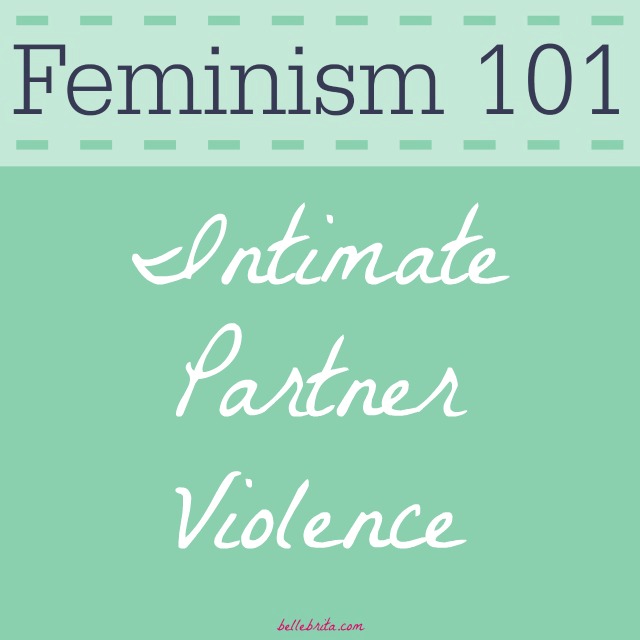TW: discussion of sexual assault and physical violence, in objective and explicit terms, but not in personal or graphic terms
As a feminist, I care about many issues that affect women. I care about our lack of representation both in politics and in Hollywood. I care about the objectification and commodification of female bodies. I care about the way major world religions including my own (Christianity) treat women as Other and as lesser.
But my greatest feminist passion is not just a “women’s issue.” My greatest feminist passion affects people of all gender identities, of all sexual orientations, and, most heartbreakingly of all, of all ages.
Intimate partner violence affects a shockingly high number of people, even here in the United States.
Note: For most of this blog post, I will be using definitions and statistics from the Center for Disease Control and Prevention. You can find all of their data sources on the CDC website. I will primarily reference the National Intimate Partner and Sexual Violence Survey. Its data is relatively recent, from 2010. Furthermore, its sample size includes 9,086 women and 7,421 men.
What is Intimate Partner Violence?
The term “intimate partner violence” describes physical violence, sexual violence, stalking and psychological aggression (including coercive acts) by a current or former intimate partner.
Intimate partner violence falls under four main categories.
- Physical violence
- Sexual violence
- Stalking
- Psychological aggression
The CDC also separates sexual violence into five categories. These categories are necessary to collect and explain the most accurate data, but I can also see how some people might find them as undermining male experiences with sexual assault.
To be absolutely clear, on a moral level, I believe the category of rape includes forcing someone to penetrate someone else. On a legal level, unfortunately, that depends on state laws. The federal definition of rape only includes penetration without consent.
The five categories of sexual violence are:
- Rape or penetration of victim
- Victim was made to penetrate someone else
- Non-physically pressured unwanted penetration
- Unwanted sexual contact
- Non-contact unwanted sexual experiences
For a very long and technical discussion on the importance of uniform definitions in data collecting, please refer to Intimate Partner Violence Surveillance: Uniform Definitions and Recommended Data Elements.
Who is Affected by Intimate Partner Violence?
- More than 1 in 3 women (35.6%) and more than 1 in 4 men (28.5%) in the United States have experienced rape, physical violence, and/or stalking by an intimate partner in their lifetime.
- About 1 in 4 women (24.3%) and 1 in 7 men (13.8%) have experienced severe physical violence by an intimate partner at some point in their lifetime.
- Nearly 1 in 5 women (18.3%) and 1 in 71 men (1.4%) in the United States have been raped at some time in their lives, and approximately 1 in 21 men (4.8%) reported that they were made to penetrate someone else during their lifetime.
- More than half (51.1%) of female victims of rape reported being raped by an intimate partner and 40.8% by an acquaintance; for male victims, more than half (52.4%) reported being raped by an acquaintance and 15.1% by a stranger.
- Most men who were made to penetrate someone else reported that the perpetrator was either an intimate partner (44.8%) or an acquaintance (44.7%).
I don’t know about you, but these statistics concern me. These statistics tell me that the United States, as a society, does not take intimate partner violence seriously.
If you remember back to my post on rape culture, I shared this definition. Rape culture is “a society in which rape is pervasive and normalized due to societal attitudes about gender, sex, and sexuality.” Unfortunately, this truth extends to other forms of violence.
How Can We Prevent Intimate Partner Violence?
Unfortunately, intimate partner violence is often cyclical. That is, victims of physical or psychological abuse often become perpetrators of intimate partner violence. For example, children who are abused or who witness abuse are more likely to become abusers as adults. That is NOT to say that most victims of child abuse will become abusers.
Prevention strategies focus on promoting healthy relationships. There’s a reason why I routinely criticize relationship advice. Too much relationship advice sounds perfectly normal if your perspective is limited solely on healthy relationships. The same relationship advice becomes somewhat controlling, if not downright abusive, in the wrong relationship. And rarely does that advice come with a warning label.
Yesterday I pointed out that protecting yourself from abuse is not selfish, in response to bad relationship advice.
I’ve also discussed the disturbing way we refer to “compromise” in romantic relationships, about situations we’d call controlling or abusive in a platonic or familial relationship.
I write about consent pretty often.
I do all of this because I worry about the wrong person getting the worst interpretation of the bad relationship advice on the Internet. Healthy relationships don’t involve being manipulative, or doing whatever one person wants, or being forced into rigid gender roles.
Intimate Partner Violence and Toxic Masculinity
The statistics do not lie. Men are victims of intimate partner violence too, if not quite as often or as severely as women are.
But the same societal attitudes about masculinity both create perpetrators of intimate partner violence and minimize the suffering of male victims of intimate partner violence.
When masculinity focuses on aggression and violence, everyone loses.
Even the CDC lists strict adherence of gender roles as a risk factor for intimate partner violence, twice.
“Belief in strict gender roles (e.g., male dominance and aggression in relationships)” is an individual risk factor for intimate partner violence.
“Traditional gender norms (e.g., women should stay at home, not enter workforce, and be submissive; men support the family and make the decisions)” is a societal risk factor.
Men who hit women even admit their reasoning stems from gender norms. In one NPR report, a man explains, “The Bible says that women are supposed to obey their husbands. She didn’t obey me. So I had to hit her.”
But these strict gender roles also hurt men who are victims of intimate partner violence. Too many people in America laugh at the idea of women hurting men. How many times did the show How I Met Your Mother include the literal punchline of Robin hitting one of the men?
Too many people also think that men can’t be raped. Look at the general reaction to statutory rape by female teachers. Those teenage boys are “lucky.” Remember how Glee totally floundered with their episode on child molestation? Yeah.
Too many people laugh at the idea of prison rape. I get that most people don’t have sympathy for prisoners, but no one deserves to be raped. No one. And when you think about how many nonviolent offenders get stuck in the prison system, prison rape sounds even more atrocious.
Many more myths persist in regards to intimate violence against men, especially sexual violence. Men are even less likely than women to report intimate partner violence.
Let’s work towards a more complex and fluid concept of masculinity. Let’s stop saying, “boys will be boys” when it comes to violence. Let’s believe boys and men who bravely admit they’re survivors of intimate partner violence.
October is Domestic Violence Awareness Month, which is today’s optional topic for The F-Word. DVAM dates back to 1981, starting as just a “Day of Unity.” DVAM focuses on three main ideas:
- Mourning those who have died because of domestic violence
- Celebrating those who have survived
- Connecting those who work to end violence
You can learn more about Domestic Violence Awareness Month at the National Resource Center on Domestic Violence.
What can we do as individuals to stop intimate partner violence? What can we do to support survivors? Please share your insights in the comments below.


This is such an important issue. The statistics are shocking and this ongoing violence needs to stop.
Thanks for sharing (and for linking up to the #SHINEbloghop).
Wishing you a lovely day.
xoxo
So often people think that feminism is now unnecessary in the US because “we’ve achieved it.” While rates of IPV are much higher in other countries, they’re still disturbingly high here. I feel like this is an issue where awareness campaigns are still needed. We can’t stop a problem if we pretend it doesn’t exist.
Thank you for this post. For more than you know.
Promoting consent and healthy relationships, and offering support to survivors of IPV, is my greatest feminist passion.